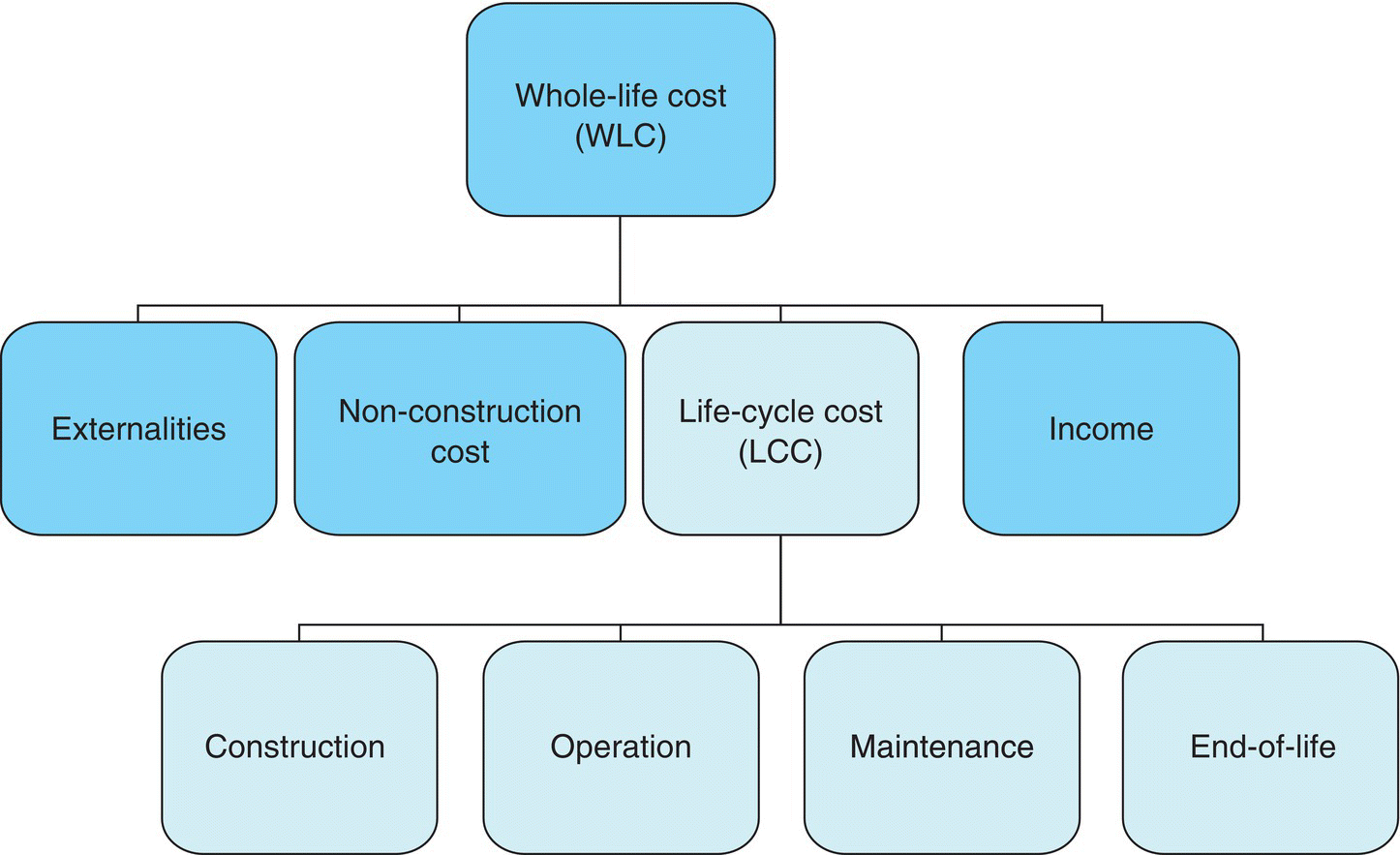Chapter 8Design Variables andWhole-Life Cost Modelling
Andrea Pelzeter
8.1 Introduction
Every variable in design may have an effect on costs, not only on initial construction cost but also on those costs that occur later, during the life cycle of the designed facility (Ellingham and Fawcett, 2006, p. 3). It is therefore important to ask fundamental questions to enable the designer to produce an efficient building structure in terms of life-cycle cost (LCC). Responses to questions such as (1) is it better to increase the initial investment, for example by investing in a geothermal installation to save consequential costs such as fuel, and (2) under what conditions might this be best achieved, need to be addressed. To assist in answering these questions, whole-life cost (WLC) should be calculated. According to ISO 15686-5 ‘Buildings and constructed assets. Service-life planning, Part 5: Life-cycle costing’ (2008), WLC includes LCC, externalities, non-construction cost and income (Figure 8.1). LCC is defined as “cost of an asset or its parts throughout its life cycle, while fulfilling the performance requirements”.

Figure 8.1 Whole-life cost according to ISO 15686-5.
This chapter focuses specifically on the application of WLC theory which is central to design economics and essential in design development to minimise carbon emissions over the lifespan of buildings and built facilities. ...
Get Design Economics for the Built Environment: Impact of Sustainability on Project Evaluation now with the O’Reilly learning platform.
O’Reilly members experience books, live events, courses curated by job role, and more from O’Reilly and nearly 200 top publishers.

